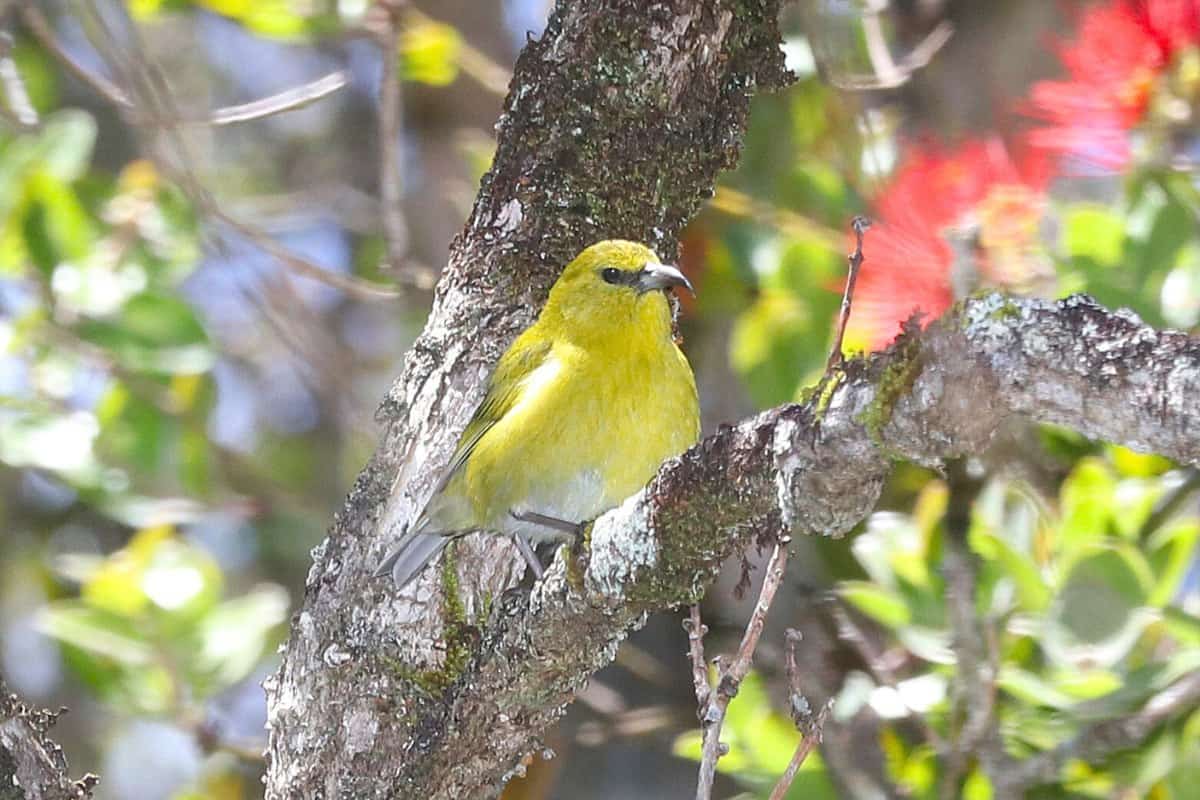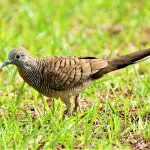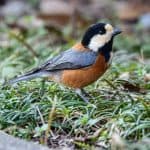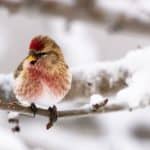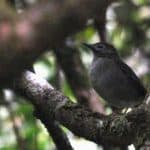Common Name: Kauaʻi ʻAmakihi
Scientific Name: (Chlorodrepanis stejnegeri)| Size | Diet | Range in Hawaii | Status in Hawaii |
|---|---|---|---|
| 4 in. - 5 in. | insects, nectar | Kaua'i | Vulnerable |
The Kauaʻi ʻAmakihi, also known as Chlorodrepanis stejnegeri, is a small bird species that is native and endemic to the Hawaiian island of Kauaʻi. With its bright green plumage and unique foraging behavior, the Kauaʻi ʻAmakihi is a fascinating bird species that has captured the attention of birdwatchers and avian enthusiasts around the world.
In this article, we will explore the world of the Kauaʻi ʻAmakihi, its unique characteristics, and its presence in Hawaii.
Kauaʻi ʻAmakihi
Appearance

The Kauaʻi ʻAmakihi is a captivating native bird that boasts a distinct and colorful appearance. Measuring around 4 to 4.5 inches in length, this small avian treasure showcases vibrant plumage that stands out against the lush backdrop of Kaua’i’s landscapes. With a splash of olive-green feathers on its upper body and a bright yellow underbelly, the ‘Amakihi is a true embodiment of tropical elegance.
Diet
The diet of the Kauaʻi ʻAmakihi is a fascinating glimpse into its role as a nectar-seeking artist of the Hawaiian forests. This native bird has a strong affinity for flowers, particularly those that offer nectar as a sweet reward.
While nectar forms a significant portion of its diet, the ‘Amakihi is not a one-dimensional diner. It also supplements its nectar intake with small insects and spiders, displaying its versatility in foraging.
Nesting
Come the nesting season, the ‘Amakihi crafts its nest with meticulous care. Constructed with twigs, moss, and other natural materials, the nest rests securely on the branches of trees, cradling the promise of new life.
A remarkable trait of the ‘Amakihi is its preference for constructing multiple nests, a behavior known as “alternative nesting.” This unique strategy serves as insurance against predators and unfavorable conditions, showcasing the bird’s adaptability in the face of challenges.
The female ‘Amakihi takes on the primary responsibility of incubating the eggs, ensuring their safety and optimal development. Once the eggs hatch, the parents engage in a bustling routine of foraging for nectar and insects to nourish their hungry chicks.
As the ‘Amakihi diligently tends to its nests, the forest canopy comes alive with the promise of the next generation. This process not only highlights the species’ commitment to ensuring its lineage but also underscores the delicate harmony of life within Kaua’i’s ecosystems.
Behavior
One of the most intriguing behaviors of the ‘Amakihi is its skillful nectar foraging. With its slender, specialized bill, it deftly navigates among the flowers of native plants, sipping nectar and facilitating pollination as it goes. This nectar-focused behavior not only sustains the ‘Amakihi but also plays an essential role in maintaining the island’s delicate ecosystem.
Beyond nectar, these birds also display their insect-hunting prowess, seeking out small prey among the foliage. Their agility in capturing insects adds a dynamic layer to their behavior, showcasing their ability to adapt their diet to changing conditions.
Perhaps most fascinating is ‘Amakihi’s role as a storyteller of Kaua’i’s ecology. Its movements and behaviors become chapters in the larger narrative of the island’s biodiversity, emphasizing the interconnectedness of all living things in this lush paradise.
Habitat
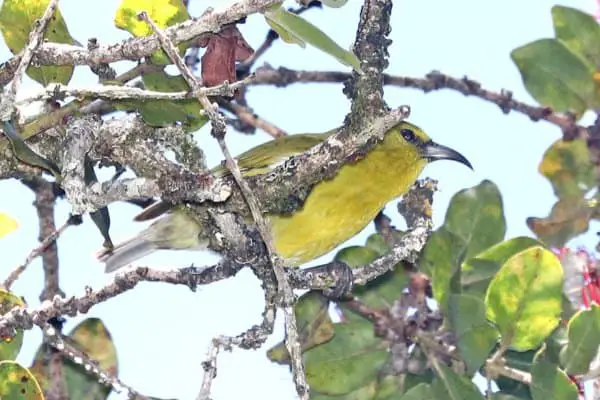
Range
The Kaua’i ‘Amakihi, an endemic and native resident of Kaua’i, stands out as the most distinctive among the ‘amakihi species. With a range limited to the Kokee State Park and Alakai Plateau region, it thrives above 600-800 meters elevation on Mt Wai’ale’ale and Mt Makaleha.
Conservation Status
The Kauaʻi ʻAmakihi (Chlorodrepanis stejnegeri) holds a conservation status of “Vulnerable” according to the International Union for Conservation of Nature (IUCN). This classification underscores the species’ susceptibility to various threats and its importance for focused conservation efforts.
Interesting Facts
1. Songbird serenades
The ‘Amakihi’s melodic song fills the forest with its sweet, high-pitched notes. These songs are not only a beautiful part of the island’s natural soundscape but also play a role in communication and territorial defense.
2. Cultural connection
The ‘Amakihi has cultural significance in Hawaiian folklore and traditions. Its presence in stories and songs adds to its allure as a symbol of the island’s natural heritage.
3. Recovery efforts
Conservationists and local communities are actively engaged in habitat restoration and protection initiatives to ensure the ‘Amakihi’s survival. These efforts reflect the dedication to preserving Hawaii’s unique biodiversity.
4. Sustainable tourism
The ‘Amakihi’s presence adds to the allure of birdwatching on Kaua’i. Responsible ecotourism allows visitors to appreciate these birds while contributing to their conservation and the local economy.
5. Rare species interactions
The ‘Amakihi occasionally forms mixed-species foraging flocks with other native birds, such as the ‘Anianiau, another Hawaiian honeycreeper. These interactions highlight the complexities of their ecosystem relationships.
Frequently Asked Questions
1. What types of flowering plants are particularly important for the ‘Amakihi’s nectar-feeding?
Native flowering plants like ‘ōhi’a lehua (Metrosideros polymorpha) play a crucial role in providing nectar for the ‘Amakihi, supporting its pollination and foraging behavior.
2. How long does the Kauaʻi ʻAmakihi live?
The lifespan of the ‘Amakihi can vary, but in the wild, they generally live for several years. Factors such as food availability, predation, and environmental conditions can impact their longevity.
3. How can people help protect the Kauaʻi ʻAmakihi?
People can support conservation organizations, participate in responsible eco-tourism activities, and contribute to habitat restoration efforts. Raising awareness about the species’ importance also plays a crucial role.
4. Are there any notable predators of ‘Amakihi and their eggs?
Predators of ‘Amakihi and their eggs include introduced species like rats, which can access nests and pose a threat to both eggs and chicks.
